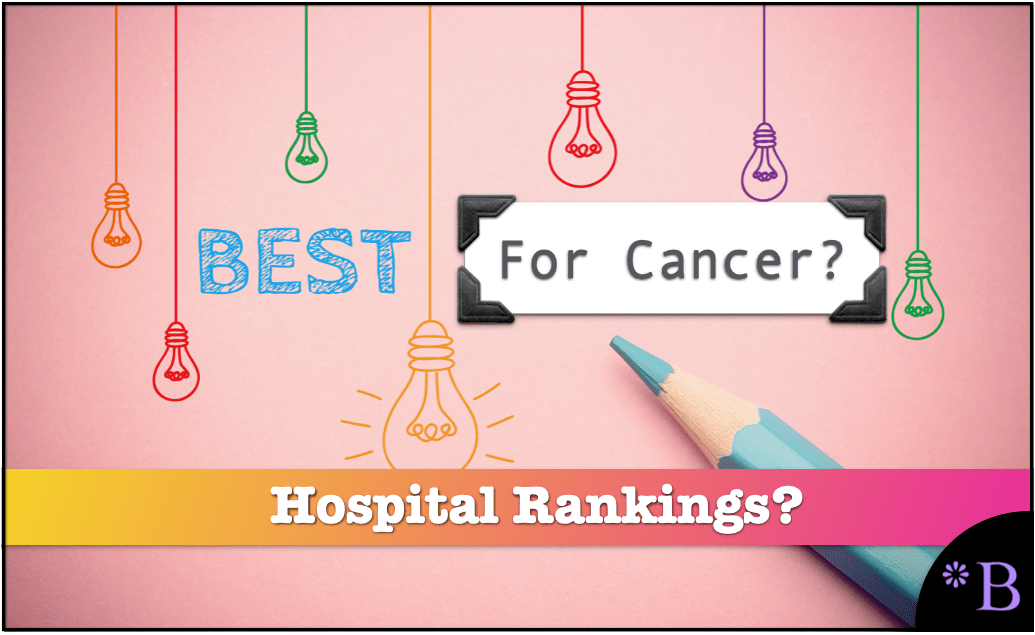What About The Best Cancer Hospitals Rankings for Cancer Treatment?
Executive Summary
- There are online sources that are aligned with the medical establishment that rank the best cancer hospitals.
- How accurate are these rankings?

Introduction
There are several rankings for the best cancer hospitals available on the Internet. Rankings for the best cancer hospitals are very infrequently analyzed for how accurate these online rankings are.
US News and World Report
US News and World Report have the best-known ranking of the best cancer hospitals in the US. Here you can see the City of Hope hospital promoting its high ranking in US News and World Report City of Hope among U.S. News & World Report’s top 10 ‘Best Hospitals’ for Cancer.
Here is a quote from that article.
“City of Hope is honored to be recognized by U.S. News & World Report for the quality, innovation and care demonstrated by our extraordinary physicians, nurses, researchers and health care workers,” said Robert Stone , City of Hope president, CEO and the Helen and Morgan Chu Chief Executive Officer Distinguished Chair.
While many people read the US News ranking, far fewer read their methodology. This methodology can be found at the following link US News and World Report Methodology 2022-23 Best Hospitals: Specialty Rankings
We found the following quotes concerning US News and World Report’s methodology.
What is the Measurement Approach of the US News and World Report Ranking?
The primary outcomes measure in 11 of the 12 data-driven rankings (except Rehabilitation) is 30-day patient survival (i.e., how many patients are alive at 30 days after inpatient hospital admission).
Standardizing on 30-day mortality. Prior to 2007, mortality in the Best Hospitals methodology was defined as the rate of inpatient deaths (i.e., those occurring from admission to discharge). As inpatient hospital length of stay has decreased, inpatient mortality has generally decreased as well. Mortality over longer periods post-discharge, however, has not declined markedly. 38 Quality of care in the inpatient setting can affect patients’ health and functional status for many weeks following discharge. AHRQ states in Refinements of the HCUP Quality Indicators Technical Summary (2001) that “without 30-day mortality data (ascertained from death certificates), hospitals that have short lengths of stay may appear to have better patient outcomes than other hospitals with equivalent 30-day mortality.”
Standardizing Measurement Across Different Medical Conditions?
For cancer, this measurement of an outcome does not work. Most cancer patients don’t die within 30 days, no matter their treatment.
US News and World Report make a strange assertion about the 30-day mortality measurement.
To address these concerns, the 2007 rankings introduced 30-day mortality (i.e., 30 days post admission) for all specialties except Cancer. This exception was made because of concern that 30-
day mortality might penalize hospitals that see large numbers of cancer patients at the end of life—thus artificially inflating their mortality numbers. After further review of available data and research, however, we concluded that 30-day mortality should be consistent. Starting in 2008, 30-day mortality has been used for all data-driven specialties.
Consistency between other medical conditions does not make sense.
The measurement needs to be specific for each condition treated.
Other Factors US News and World Report Uses in its Best Cancer Hospitals Rankings
Here is how US News and World Report weights the inputs to their conclusion.
All Specialties (Excluding Cardiology & Heart Surgery, Obstetrics & Gynecology, Neurology & Neurosurgery, and Rehabilitation)
The U.S. News ranking score reflects the following weights for each of the major components:
- Structure = 30%
- Process/expert opinion = 27.5%
- Outcomes = 37.5%
- Patient experience = 5%
The problem is that the outcomes are slightly more than 1/3 of the total weight.
Things like structure and process/expert opinion contain a great deal of bias, much of this due to the financial conflicts of the polled MDs.
US News and World Report include things like whether a hospital has some certifications or whether it is selected as a location for a health authority, like the NCI. This is how US News and World Report explain the NCI.